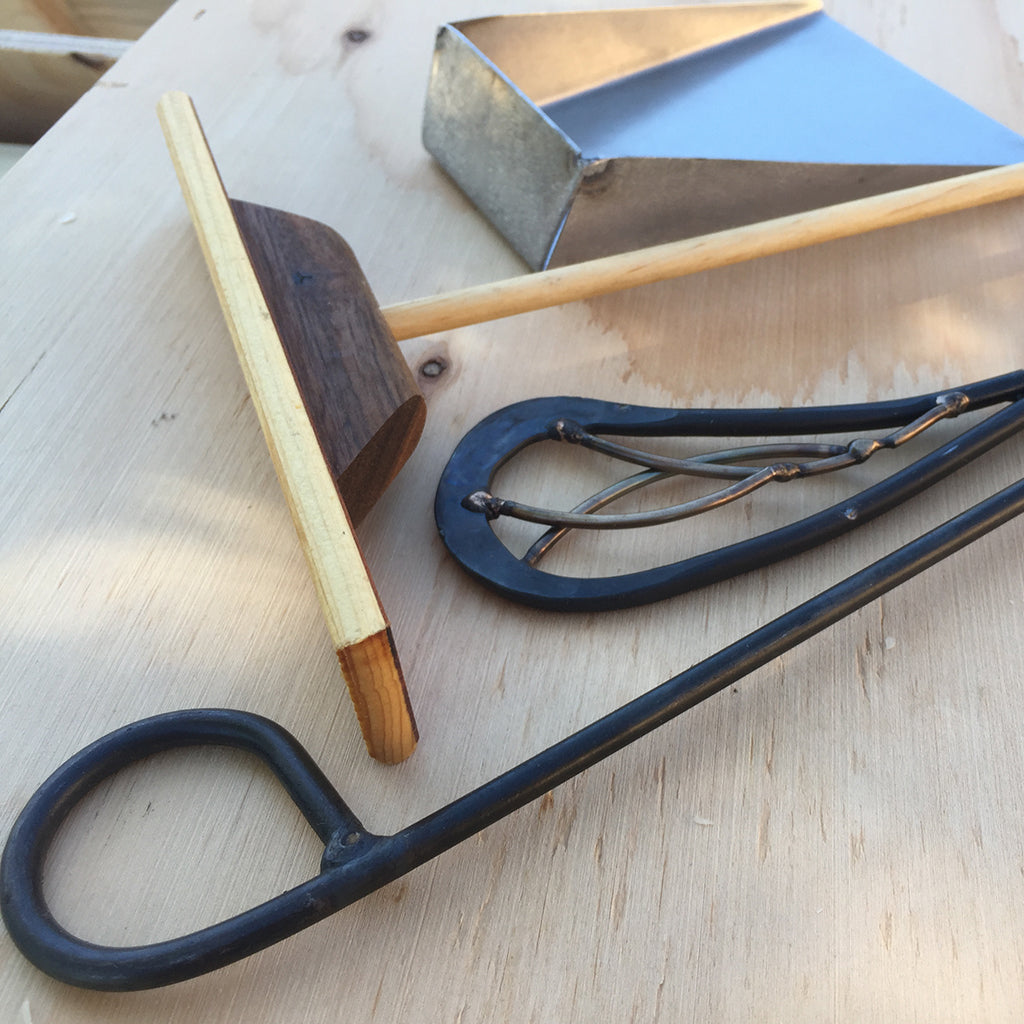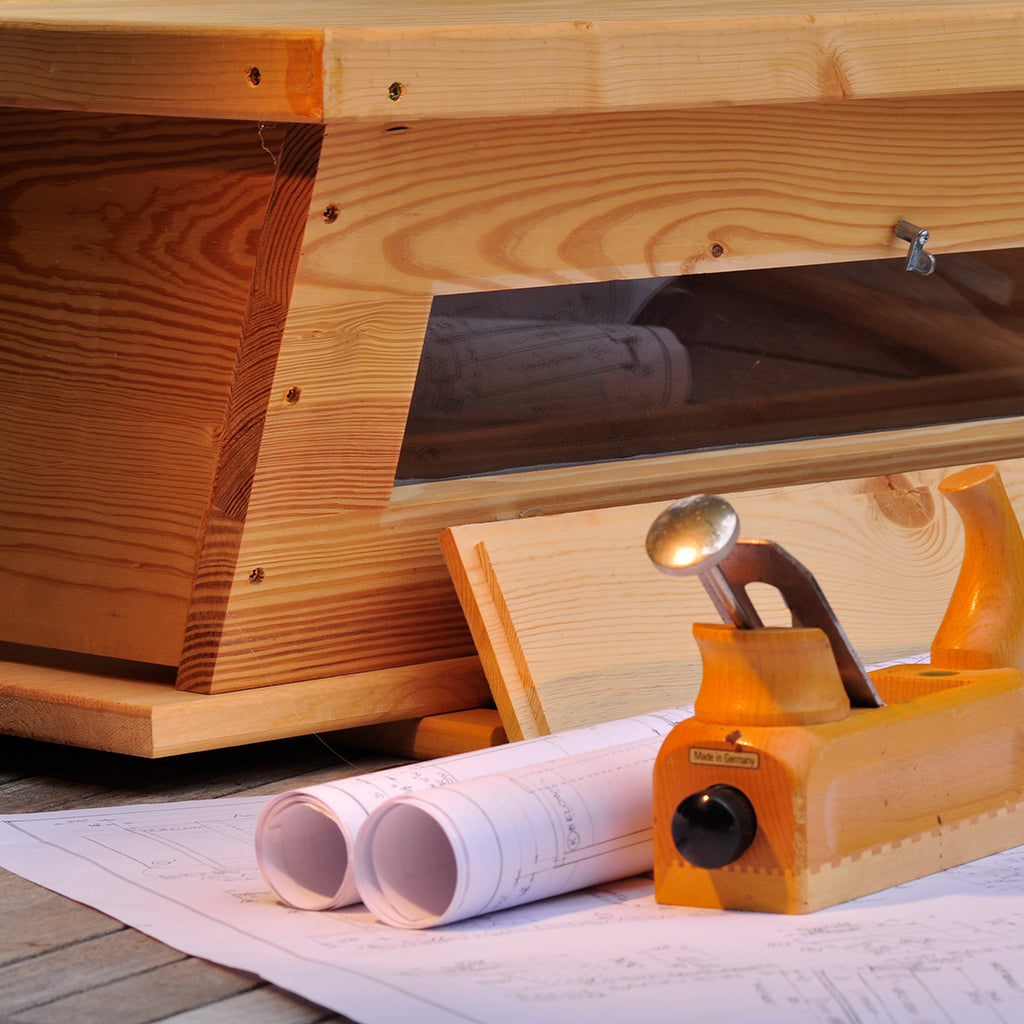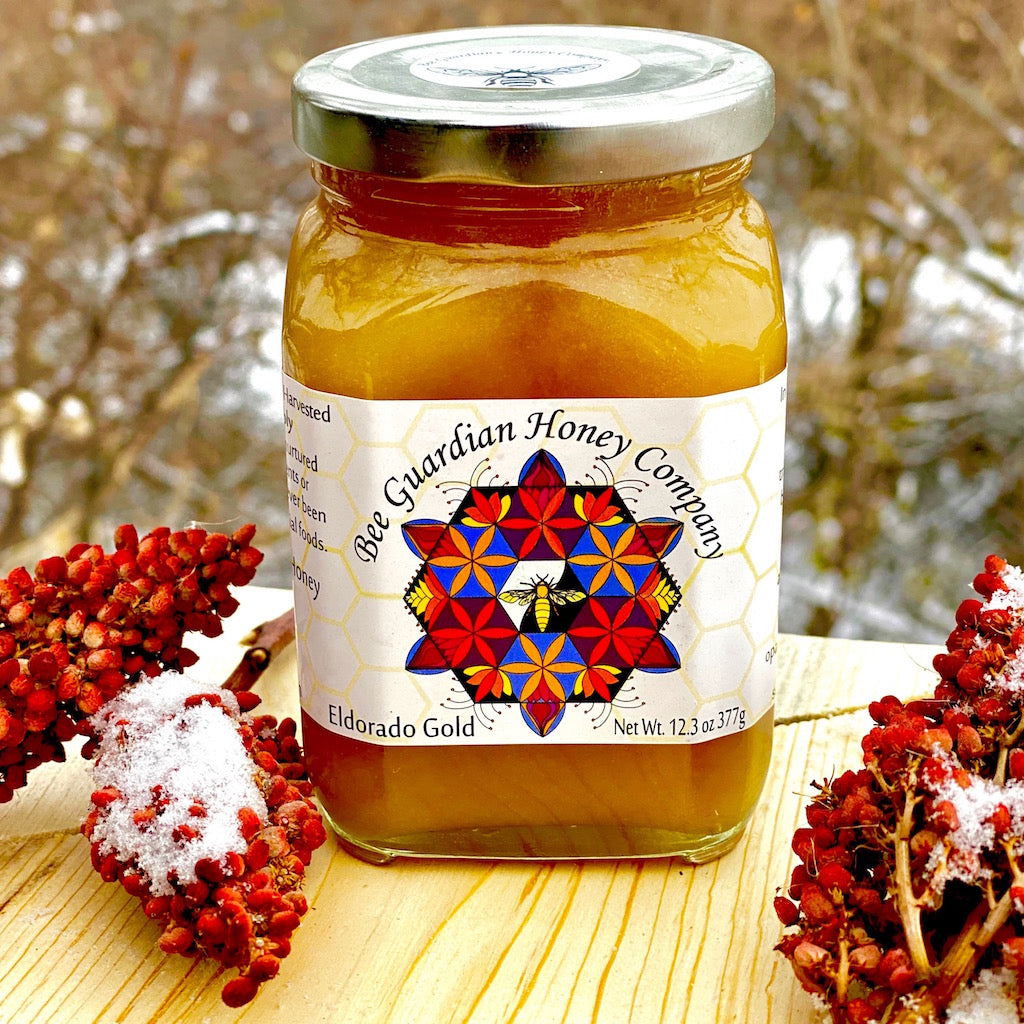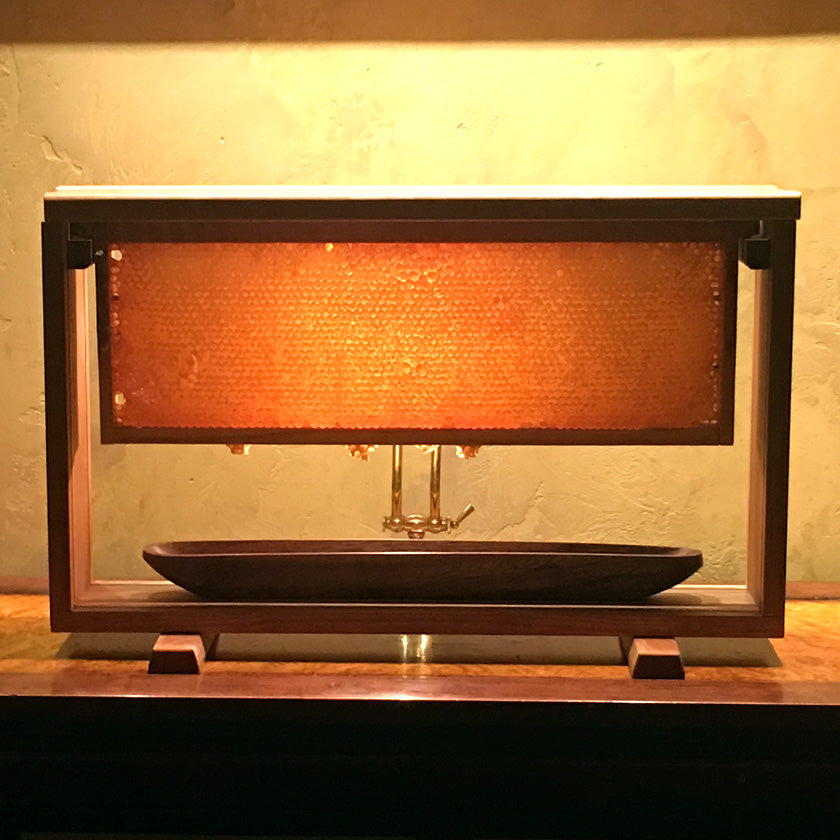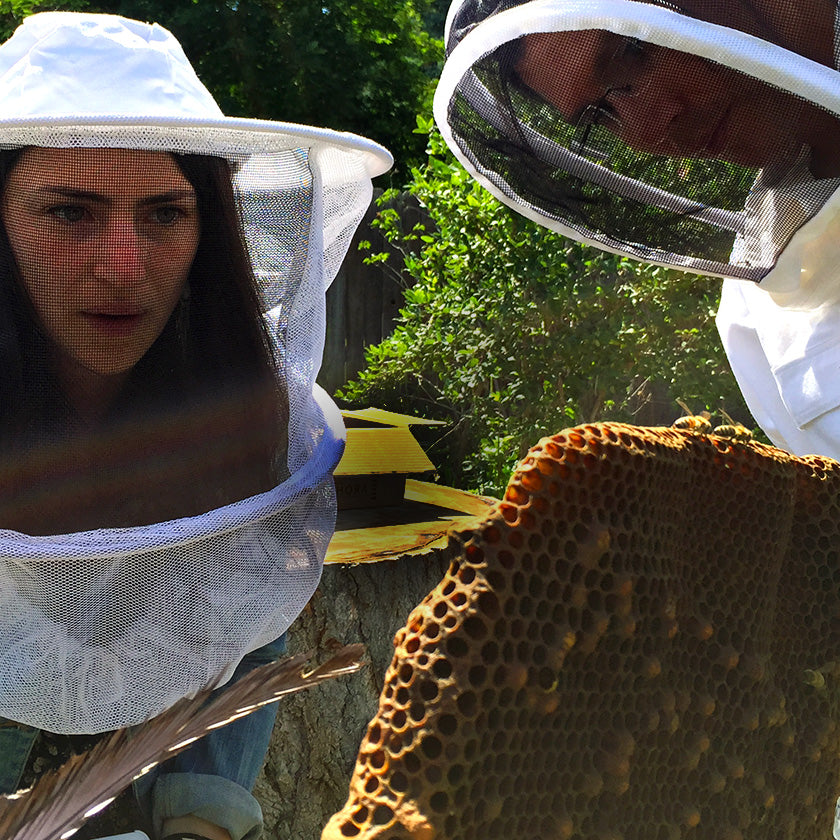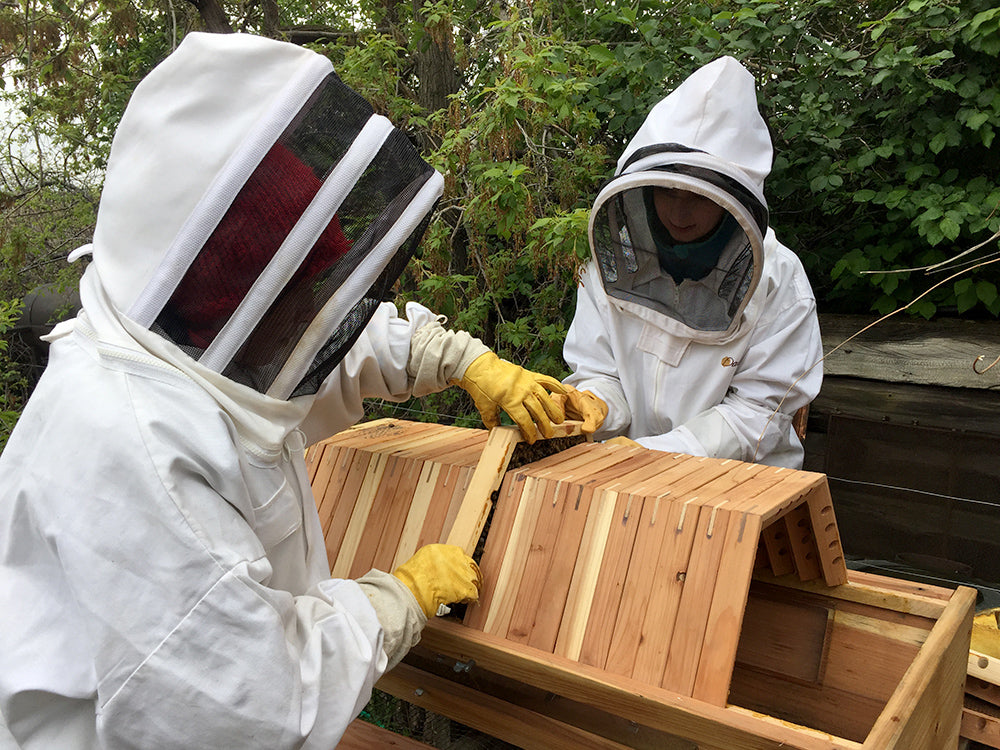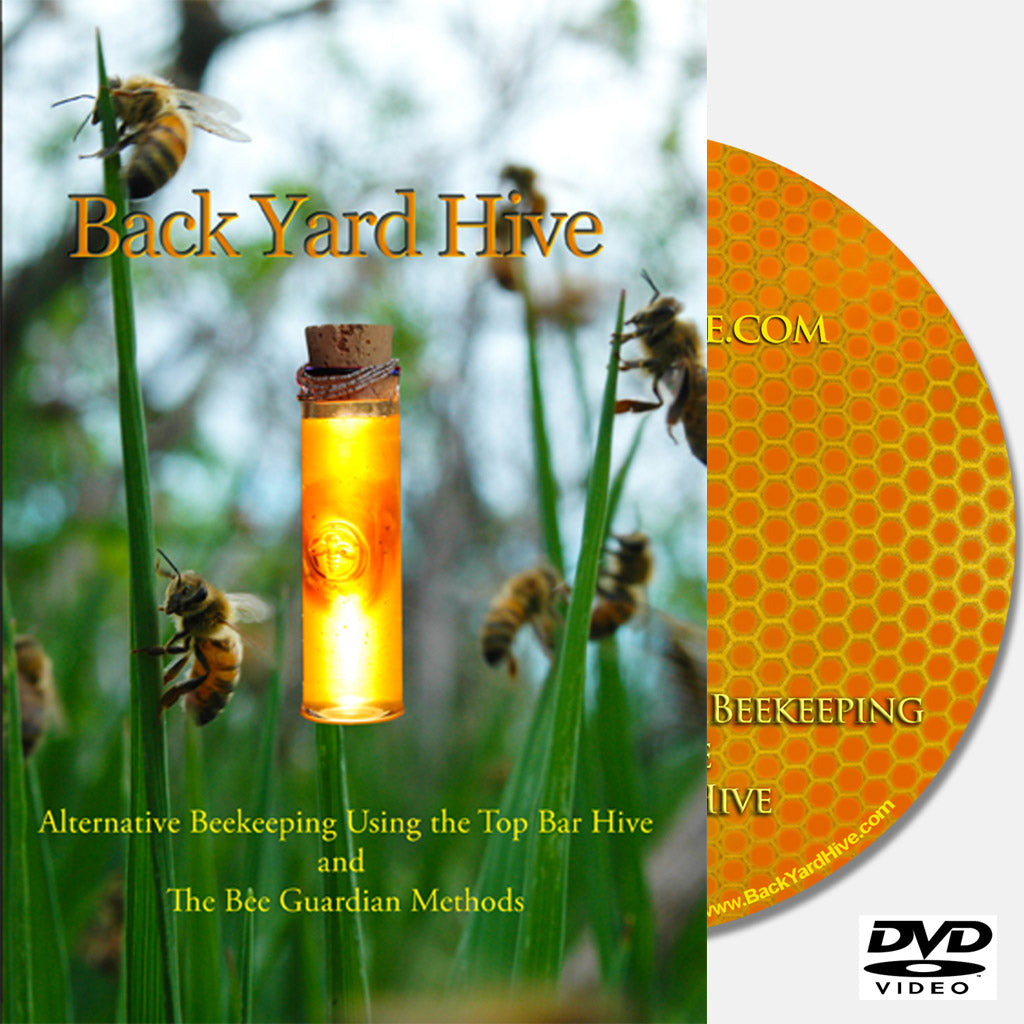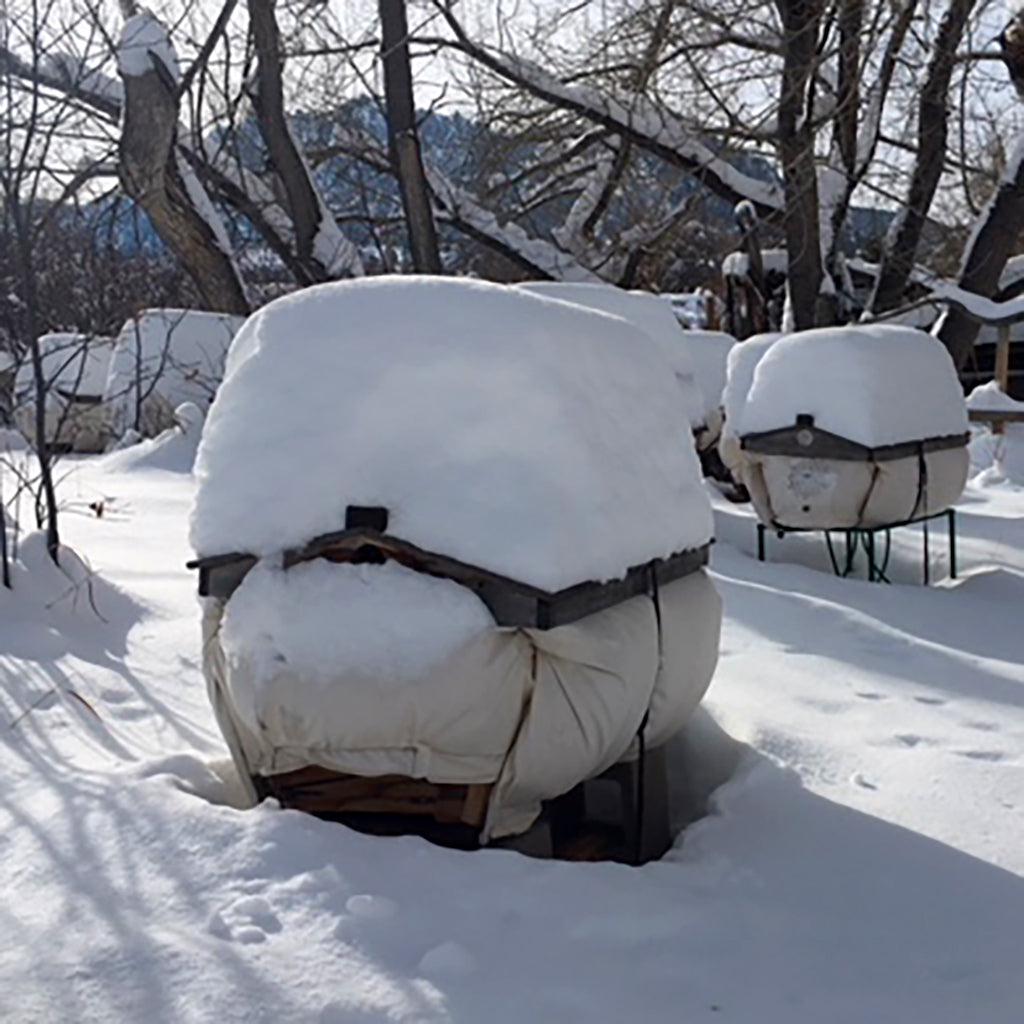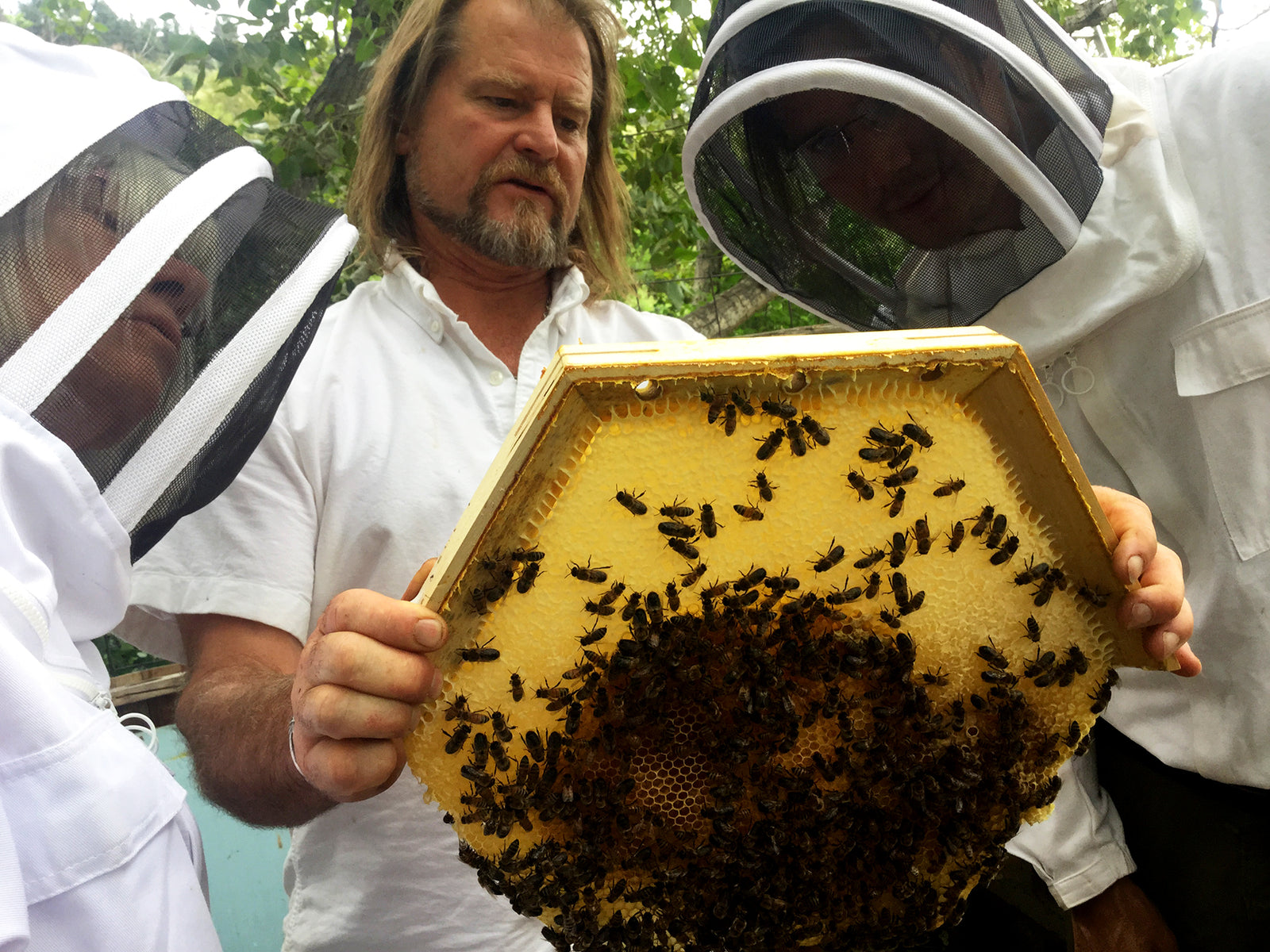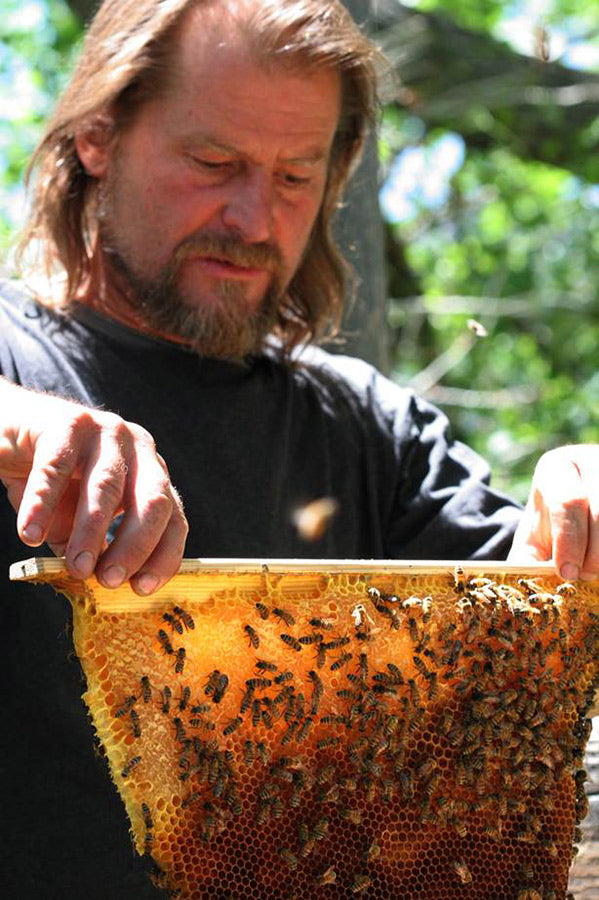We are no longer sending out entrance reducers because we have decided that they can cause the hive to overheat. The bees are not strong enough to move the entrance reducer out of the way. Due to climate anomalies, many areas are experiencing unusually warm days during the winter months. Unless the bee guardian is hyper-vigilant, these warm days can catch everyone by surprise. If the bees are not able to open their entrance and get air circulating through the hive, the consequences can be disastrous.
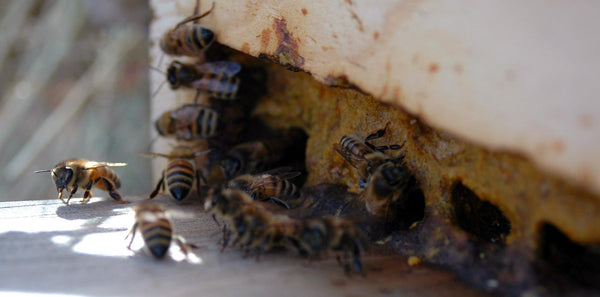
The majority of bees already have the genetic ability to reduce their entrance by using propolis. This natural process is sufficient to close up the hive for the winter months.
If it's necessary, if the bees have shown no sign of reducing the size of their entrance by late autumn, you can help them out by using a bunch of small sticks. The bees will be able to better regulate the hive temperature by opening the entrance to the extent they need.
Here is the entrance partially closed down with screen if the weather is still warm the bees need proper ventilation.

Many of the hives with moisture problems are still thriving yet a few people have lost their bees due to the excessive moisture and mold in the hive that we think may be caused by use of the entrance reducer during the warmer winter days that we think is causing overheating. People are finding dead bees scattered throughout the hive and mold on the edges of some of the combs. It’s really devastating for people to open their hive on one of these early spring days only to find a hive of dead bees and way too much moisture condensed on the sides of the hives.
We think this moisture problem occurs when the weather just starts to warm up in late February when the hives are still secured for winter with the entrance reducers. On these warm very early spring days, the hive gets too hot for the bees all bundled up for winter and so they get water to cool the hive down but aren’t able to generate enough air circulation with the two bee space of the entrance reducer to get that moisture back out again. The hive then gets even hotter with this new humidity and without a place for the now steamy air to go. At this point the bees scatter throughout the hive and away from the brood nest where we later find them in clumps toward the back and front of the hives.
The entrance reducers are a very effective tool in helping the bees stay warm over the deepest winter months yet like many tools, they can also be dangerous if not used under the correct circumstances which change with the weather of that particular year.
At most, the entrance reducers that come with the hives should only be used for the coldest few months of winter and should be taken out regularly on the warmer days. When you are comfortable outside in just a light sweater, then it is time for the entrance reducer to come out.
What I’ve done that has seemed to work really well, especially if you don’t want to have to think about it so much over the winter, is stuffed about 2/3 of the entrance with bits of dried grass leaving a two inch space for the bees to go in and out of. The grass is great because even though it doesn’t fully seal the space from the wind, it is a material that the bees can manipulate themselves and change according to their needs.
Plus, they can propolize the grass to make it more weather resistant. It’s like a bridge for the hives that don’t have the genetic memory to propolize the entrance themselves yet not so much of a crutch as the wooden entrance reducers because it also encourages the bees to be more self-reliant by them having control over the airflow that comes into their hive.
Here are a few notes from concerned bee guardians:
~BIG CONCERN - My hive is moldy. Several bars to the back and the false-back were black on top, some black at the edges of combs, and the bottom of the hive is yucky- powdery and black in spots. It smells moldy. I'm guessing the extra ventilation of no entrance reducer and me removing some combs plus less precipitation will help a bit, but not completely. Should I be concerned?
~On my one top bar hive with Italians in it, there appears to be mold growing on the several of the combs. All are pretty close to the front of the hive. At least from center forward. I did not remove any combs last fall as I wanted to let the bees use what honey they needed for the winter.
These are the symptoms of possible moisture issues in a hive:
Are there clumps of dead bees scattered throughout the hive?
Is there any black mold or any yellow splotches you can see in the hive?
Does you hive sit in direct sun?
Through the window, can you see any moldy comb or black spots?
Is there a large amount of bees toward the front and/or back of hive (away from brood nest)?
If yes,
When did you move the false-back back toward the back of the hive?
Was your entrance reducer in the hive past February and/or on the warm winter days?
At what point did you first start to notice the excessive moisture in the hive?
If you are experiencing any of these problems then make sure the entrance reducer is out and on a warm, sunny day, open the hive and clean out the dead bees and scrape off the moldy parts of the comb while working fairly efficiently so that the surviving bees aren’t exposed to any more stress then they need to be.
Also, make sure your hive is partly shaded, especially during the summer months.


